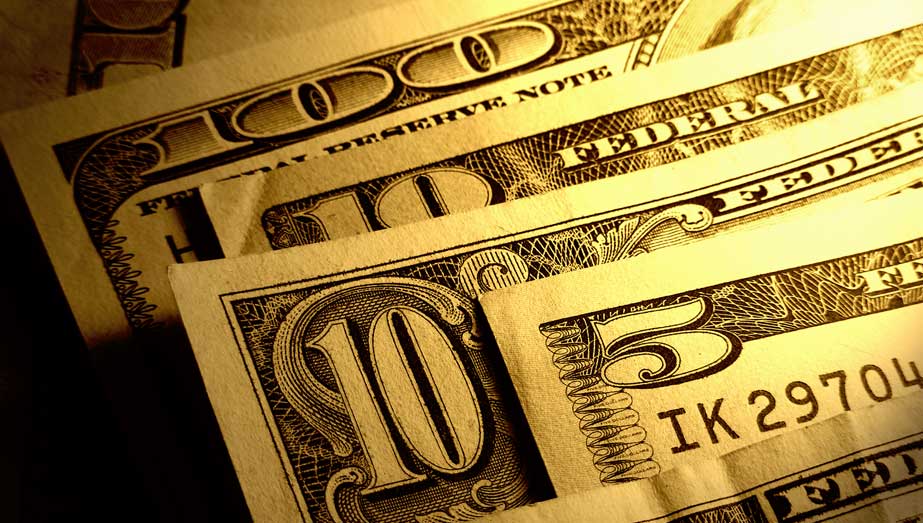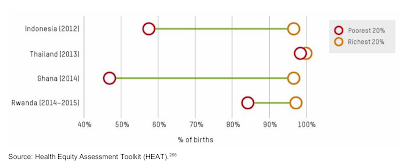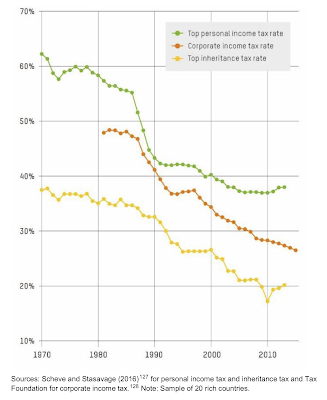
This article was last updated on April 16, 2022
Canada: ![]() Oye! Times readers Get FREE $30 to spend on Amazon, Walmart…
Oye! Times readers Get FREE $30 to spend on Amazon, Walmart…
USA: ![]() Oye! Times readers Get FREE $30 to spend on Amazon, Walmart…
Oye! Times readers Get FREE $30 to spend on Amazon, Walmart…
The recent report “Public Good or Private Wealth” by Oxfam provides us with an up-to-date examination of the growing global wealth gap between the wealthiest and poorest among us and how this inequality can be reduced to benefit the hundreds of millions of ordinary people who need access to better education and health care. Here is a summary of the findings of the report.
A.) The wealthiest among us:
1.) in the decade since the Great Recession, the number of billionaires in the world has nearly doubled to 2,208 in total. Between 2017 and 2018, a new billionaire was created every two days.
2.) in the last year alone, the total wealth of the world’s billionaires has increased by $900 billion or an average of $2.5 billion daily.
3.) in 2018, 26 people owned the same wealth as the world’s poorest 3.8 billion people, down from 43 people in 2017.
4.) the richest man in the world, Jeff Bezos, saw his fortune increase to $112 billion. Just 1 percent of his fortune is equivalent to the entire health care budget for Ethiopia, a nation of 105 million people.
5.) between 1980 and 2016, the richest 1 percent captured 27 cents of every dollar in global income growth.
6.) in the United States, White males own 100 times more wealth than single Hispanic women. Globally, men own 50 percent more of the total wealth than women.
7.) the super wealthy are hiding at least $7.6 trillion from national tax authorities, avoiding an estimated $200 billion in annual tax revenues.
B.) The poorest among us:
1.) 3.4 billion people subsist on less than $5.50 per day
2.) a child from a poor family in a developing nation is three times more likely to die before the age of five than a child from a rich family.
3.) the rate of global poverty reduction has halved since 2013.
4.) if the unpaid care work done by women across the globe was carried out by a single company, it would have an annual cash turnover rate of $10 trillion.
5.) almost 10,000 people die in low and middle income nations every day because they cannot access healthcare. Here is a graphic showing the percentage of births with assistance of a midwife or skilled medical professional for the poorest and richest 20 percent of the population of four nations:
6.) 262 million children will not attend school on a daily basis.
7.) women from the lowest castes of Indian society can expect to live 15 years less than their upper caste counterparts. Life expectancy in the poorest parts of London is six years shorter than in wealthier neighbourhoods located nearby.
8.) Social mobility between generations has slowed in recent years, largely because the quality of education differs greatly between social classes. A girl from a poor family in Kenya has a one in 250 chance of continuing her education beyond secondary school. By comparison, a boy from a rich family has a one in three chance of continuing his education beyond the secondary school level.
Now, let’s look at what the rich enjoy. Here is a graphic showing how the top personal income tax rates, corporate income tax rate and top inheritance tax rates have dropped for 20 rich nations over the past five decades:
In the world’s wealthiest nations, the average top rate of personal income tax fell from 62 percent in 1970 to 38 percent in 2013. In nations like the United Kingdom and Brazil, the poorest 10 percent of the population is paying a higher proportion of their incomes in tax than the wealthiest 10 percent. When it comes to global tax revenues, only 4 cents in every dollar of tax revenue comes from taxes on wealth. If the wealthiest people in the world paid just 0.5 percent extra in taxes, the funds raised could provide healthcare that would save 3.3 million lives and educate 262 million children who do not attend school.
The growing gap between the world’s rich and poor is dividing the globe as shown in this quote from the paper:
“Respected voices have warned that across the world, from the US to Brazil, from Europe to the Philippines, inequality is contributing to a poisoning of our politics. In recent years, we have seen crackdowns on freedom of speech and democracy by governments worldwide. The Council on Foreign Relations has highlighted the evidence that the gap between rich and poor is helping to fuel authoritarianism. Rather than working to heal the divide between rich and poor, some leaders are instead seeking to vilify immigrants, other ethnic groups, other nations, women and people in poverty. In more unequal countries, trust is lower and crime higher. Unequal societies are more stressed, less happy and have higher levels of mental illness….
Economically unequal countries are countries where women and men are more unequal too. Societies in which the gap between rich and poor is much lower are those in which women are treated more as equals. Gender inequality is neither an accident nor something new. Our economic rules have been written by rich and powerful men in their own interests. The neo-liberal economic model of today has made this worse – cuts to public services, cuts to taxes for the richest individuals and corporations, and a race to the bottom on wages have all hurt women more than men.”
The world is providing us with abundant evidence of the social breakdown that occurs when economic prosperity is not shared. Public movements across Europe, the United States and other regions of the world dramatically show what happens when the elite drive the economic agenda to achieve their own goals which most certainly do not include universal education and healthcare. While tax policies have the potential to reduce inequality, it is a rare politician that acts in a manner that benefits the poorest among us.
Click HERE to read more from this author.
You can publish this article on your website as long as you provide a link back to this page.



Be the first to comment